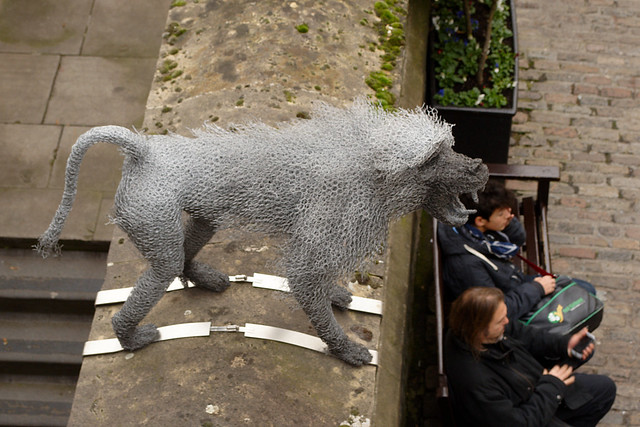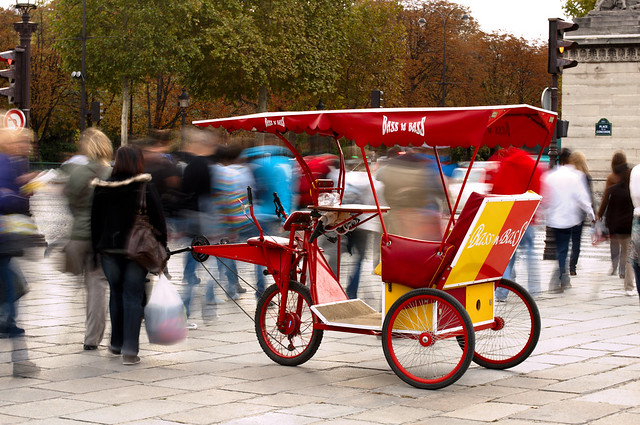Absolute zero, or 0°K is the minimum possible temperature, and there has been a race of sorts over the last couple of centuries to reach that temperature in the laboratory. The experts discussing it on In Our Time were Simon Schaffer (University of Cambridge), Stephen Blundell (University of Oxford) and Nicola Wilkin (University of Birmingham).
The programme started with the Greeks (as a sort of in-joke I think) and mentioned their idea of cold as being radiated in the same way heat is. And then we fast-forwarded through a couple of millennia to the 17th Century when Boyle (amongst others) was speculating about the existence of a supremely cold body which was in effect the essence of cold. And in the 18th Century a French man (Guillaume Amontons) was measuring temperature by means of an air thermometer. He saw this as the effects of heat on the “springiness” of air which increased as the temperature went up. So he postulated that at some low temperature there would be no springiness left in the air and so this must be the lowest possible temperature. In the 19th Century this was taken further, by Kelvin, who used thermodynamics to calculate the lowest possible temperature and set this as the zero point on his temperature scale which is still used by physicists today. 0°K is -273°C, and Bragg unfortunately kept misspeaking through the programme and saying “-273°K” when he meant absolute zero.
By the end of the 19th Century (i.e. before quantum mechanics was thought of) there was a theoretical consensus that temperature could be measured by the energy of atoms of the substance. As the temperature increases the atoms move around more, as it decreases the atoms move around less. Absolute zero is the point where the atoms and their electrons etc. have stopped moving, everything is fixed in place.
And so practical physicists started to try and reach this temperature. The first experiments were done by Faraday, who used pressure to liquify chlorine. The principle behind this is the same was why tea made up a mountain doesn’t really work – as the pressure lowers (because you’re up high) then the water for the tea boils at a lower temperature and so boiling water is no longer hot enough to make tea properly. So in these experiments Faraday increased the pressure that the chlorine was under until the boiling point of it was above room temperature, so the chlorine liquefied. They didn’t spell out the next bit, so I’m guessing here – but I think it’s that once you return the pressure to “normal” then you end up with very cold chlorine liquid (-30°C). He liquefied several gases, but regarded the noble gases as being “impossible” to liquefy, this became the next goal for physicists interested in absolute zero.
At this point in England (which was at the forefront of such research) there were two main players, James Dewar and William Ramsay. Both Scots working in London, and they loathed each other. Which was a shame, as that meant they didn’t work together instead trying put the other one down or prevent him from getting hold of reagents for experiments. Both were interested in liquefying the gases thought to be impossible – as a side-effect of building his research equipment Dewar invented the thermos flask, and Ramsay discovered (and liquefied some of) the noble gases. Ramsay had control of the country’s supply of Helium, which was one of the newly discovered gases (first seen in the sun before being discovered on Earth, hence the name), and prevented Dewar from getting enough to be able to try liquefying it. So instead this was left to a German scientist called Heike Kamerlingh Onnes to achieve. Helium liquefies at about 4°K so we’re down to pretty close to absolute zero here.
Onnes also started to investigate the properties of materials at these low temperatures. In particular he looked at electrical resistance in mercury as you lowered the temperature – one major theory had been that as you reduced the temperature then the electrons would slow down, so resistance would increase. However Onnes found the exact opposite – mercury at the temperature of liquid helium had no measurable resistance at all. He set up an experiment with a loop of mercury at this low temperature and introduced a current to it, after a year the current was still flowing just the same as it had been to start with.
This superconductivity was the first quantum mechanical property to be seen at a macro scale – normally you don’t see quantum mechanical effects at this scale because the jittering around of the atoms disguises and disrupts it. Superfluids are the other property seen at these low temperatures – this is where a liquid has no viscosity.
One other effect of quantum mechanics on the story of absolute zero is that it has changed the understanding of what it actually is – the 19th Century understanding was that everything had stopped moving, there was no energy. However this cannot be the case because the Heisenberg Uncertainty Principle states that you can either know where a particle is or how it’s moving but not both. And if everything has stopped moving then you’d know both, so this can’t be the case. So now there is a concept of “zero point energy” for the energy that remains at absolute zero.
Modern physicists are still trying to reach as close to absolute zero as possible, but it is now thought to be a limit in the mathematical sense – they can tend towards it but not reach it. Part of the reason for this is Zeno’s Paradox – any cooling method cools a body by a fraction, say half. So you can halve the temperature, and halve it again, and halve it again and so on, but if you do that then you never reach your goal. But they’ve got within a billionth of a degree.
This has all been very blue skies – science for the sake of curiosity alone. But along the way there have been inventions and engineering solutions that have had significant practical applications. I mentioned the thermos flask above, but the much more significant invention is the fridge which relies on principles and apparatus designed in this quest for absolute zero and now underpins modern civilisation (think of a world where we couldn’t freeze or refrigerate our food).
And right at the end Bragg flung in a “rabbit out of the hat” question, as he called it. A group of German scientists have managed to get a substance to below absolute zero. Wilkins answered this with one of those physics explanations that makes it all seem like black magic to me – whilst it has a negative temperature in one sense it will be hotter than absolute zero in another sense. And even tho that temperature was reached it won’t’ve been reached by going via absolute zero. She didn’t have a chance to expand before they were out of time, but I rather suspect it would require both high level mathematics & a strong grasp of quantum mechanics to understand!

